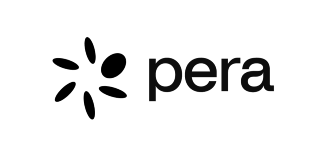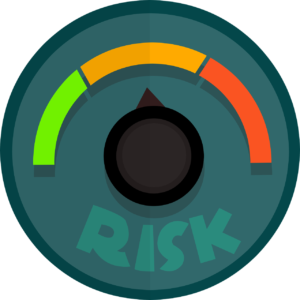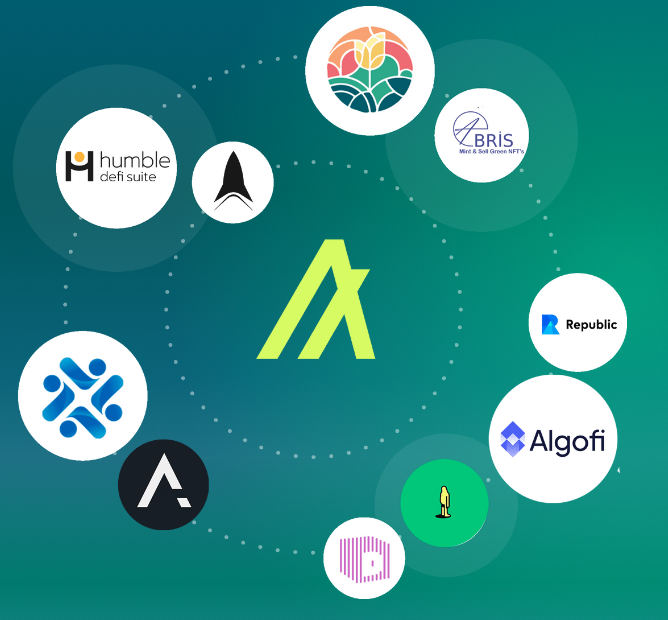Making the jump from a cryptocurrency holder to an ecosystem user can be intimidating, especially when you consider the high gas fees and risk of using popular chains like Ethereum. Algorand on the other hand, has microcent transaction fees and near instant finality, making it really easy to use and beginner friendly. Many active Algorand Ecosystem users such as myself started out as investors who held $ALGO on an exchange but did not actively use it.
Crypto Exchanges are a wonderful place to get started on. They’re easy to use, safe, and provide exposure to various cryptocurrencies so users can learn about them before diving too far in. That said, if you’re reading this article I’m going to assume you’re already a supporter of Algorand but primarily familiar with the $ALGO token. You could be hesitant of diving deeper for a variety of reasons: There is too much information to sift through, you are wary of being scammed, you worry it will take too much time and effort, or it simply does not seem worthwhile to learn more. The purpose of this article is to show you how easy it is to integrate into the Algorand Ecosystem while helping you stay safe from bad agents.
Note: If you’ve never heard of Algorand, this article may not make too much sense to you. Read here first.
Table of Contents
Algorand Wallets
Avoiding Scams and Rugpulls: Green Flags and Red Flags
Decentralized Exchanges
Integrating Into the Community
Gaming/Investing/NFTs
Algorand Wallets: How to Move it off Exchanges

Basics of Algorand Wallets
Setting up an Algorand Wallet is a simple process that only takes a couple of minutes. There are two major Algorand Wallets that are used: Pera Wallet and Defly Wallet. They both have somewhat different features which I will elaborate on below, but the the good news is that you can have one account connected to both if you would like to.
Both wallets have the same core features that denote Algorand wallets, so once you understand one you understand the other. The three main features you need to know are the recovery phase, wallet address, and what Algorand Standard Assets (ASAs) are.
The most important feature is the 25 word recovery phase. When you create an account on either wallet, you will be given a randomly generated sequence of 25 basic words which you save. This serves as the only key to your account, and anyone who knows these 25 words will be able to access your account and all the assets within it. You need to record this phrase in an extremely secure location, and ensure that no one ever has access to these 25 words. Under no circumstances should you ever give these out, to anyone. Anything that you see that asks for a passphrase is likely a scam.
Next, you have your wallet address. Once you create an account you will receive a randomly generated public wallet address. This acts like a mailing address in the crypto ecosystem, anyone can send you algorand assets by inputting your public wallet address. You can freely share this address. Here is my wallet address as an example.
CDOLVGJBJW4C2H5COX437LCIIUJAHENRBY64KSX57KXVG3T5GSJ7KD7JEM
Finally, you must understand what ASAs are and what their IDs means. ASAs are Algorand Standard Assets and you can think of them as cryptocurrencies and NFTs that are built on Algorand. When you would like to receive a new ASA, you must add the asset to your wallet by inputting the 9 digit identification number.
And that’s it. By understanding these three concepts, you now understand 90% of what Algorand Wallets are. All that is left is deciding which wallet app to use (or both!) and transferring Algo off an exchange to your new Algorand account.
Tip: The blockchain is totally transparent. You can look up the balance as well as incoming/outgoing transactions of a wallet on algoexplorer. You can even search ASAs up.
Best Algorand Wallets
For a detailed breakdown of the current best Algorand Wallets, read my blogpost on the Best Algorand Wallets
Pera Wallet: Best Beginner Wallet

The Pera Wallet, previously known as the Official Algorand Wallet, is the best choice for Algorand users that connect solely through their mobile devices. You can download it on the app store or the google play store. Setting up the wallet is super straight forward, but for those that would prefer to follow an official guide you can use this walkthrough.
Note: You will use your Pera/MyAlgo Wallet to connect to DEX’s, protocols, games and other things. Connecting with official protocols is safe, but you should be cautious when connecting to less reputable projects.
Defly Wallet: Best Mobile Wallet

The Defly Wallet is the best mobile algorand wallet. It has a vast array of features and one particularly exciting one called “combo-swaps” which results in the minimimum transaction fees being spent on every swap. It is the best wallet for managing your algorand account as it offers the maximum in terms of features and flexibility.
How to Avoid Algorand Ecosystem Scams, Wallet Exploits and Rugpulls:

Green Flags and Red Flags
Now that you have your Algos on a trusted wallet, you can start to dive into the ecosystem. But first, it is important to take some time to learn how to differentiate what kind of projects are safe or not. Getting scammed or participating in a rugpull is a big fear for a lot of users and the risk that comes with trying to learn more, but I am going to give you the tools you need to proceed safely in the Algorand Ecosystem.
First, we will start with green flags for projects. A single green flag doesn’t mean it is guaranteed to be safe, but I’ve never seen a project with multiple green flags rugpull or scam.
I’m going to use AlgoFi, the largest and perhaps most trusted protocol on Algorand to exemplify these green flags.
Green Flag: Official Algorand Foundation Partner
The Algorand Foundation is the non-profit tasked with overseeing Algorand’s ecosystem development, and one of the two major entities that lead Algorand. They work closely with major projects and provide grants and funding to desired areas of Algorand growth. Thus if you see that a project or protocol you are looking is actively being backed by the foundation or at least is receiving funding from them, it is a very good sign that you’re dealing with something trustworthy.
Green Flag: Publicly Doxxed Development Team
The crypto world is filled with anonymity, but it is a big positive when developers throw their real personas behind their projects. It makes it much harder for scams without repercussions to occur. See AlgoFi’s core dev team.
Green Flag: Audited Smart Contracts and Protocols
Auditing smart contracts and protocols is a task done by third party companies to ensure that there are minimal security risks and vulnerabilities in the protocol. Auditing is a huge green flag that projects care about their user’s safety and are willing to spend money on it. See AlgoFi’s audits.
Green Flag: High Quality Website and Whitepaper
High Quality Websites and detailed whitepapers can be solid indications that a project has no intention to rug. The more time and effort you see creators put into minor details, the more secure you can feel in their commitment to a project. Algofi website and documentation.
Algorand Project Red Flags

Red Flags are a bit more self explanatory, so for the most part I will just list some that you should look out for:
- Low quality website, typos, no whitepaper.
- Team is not doxxed.
- Project and Project ASAs are not verified.
- Telegram/Discord is filled with bots, few active real users. Likely paid shillers.
- Project messages you first. Very few reputable projects will ever reach out to individual users.
- Project Goals are overly ambitious, with little working products. The best teams I have seen always have a build first mentality.
- Project launches their token first before anything else. Red flag that they want your money before delivering anything.
If something feels off, trust your gut. It is far safer to be overly cautious. Verify over and over again, check multiple sources, and ask community members. Be safe!
Decentralized Exchanges on Algorand (DEX)
A Decentralized Exchange is simply a place where you can swap one ASA (algorand standard asset) for another. An example would be swapping $ALGO for $USDC, or swapping $USDC for $goBTC. The decentralized part of it means that there are no intermediaries directly running it, it’s an automatic system that functions using liquidity pools. You can learn more about the details of DEX’s here. You can think of using a DEX as like a currency exchange when traveling abroad; except with a DEX there is no middleman scalping prices and no human needed to facilitate the exchange.

If you’re a beginner, Tinyman is probably the best and most straightforward DEX to start out with. HumbleSwap, Pact.Fi, AlgoFi, and AlgoDex are also great trusted options.
Swapping on Tinyman is super easy. You can read more about it here, but the nature of the Algorand blockchain makes using a DEX very stress free and easy to use.
You connect your wallet, paste or search the two ASA IDs you want to swap, confirm that the rate shown is acceptable, then swap and sign the transactions. At no point during the swap are you giving the DEX protocol control of your wallet, you’re just allowing the transactions it prompts to execute.
Integrating Into the Algorand Social Community
Integrating into Algorand’s community is something that might seem intimidating or hard to do at first, especially if you are not a big social media user. The reality is that the community is made up of so many different people from around the world that there is a place for everyone. You can get involved with your favorite game’s discord server, support your favorite protocol on telegram, or follow your favorite project’s twitter. I’ll walk you through some of the major social media platforms and some good places to start.
Discord

Discord is arguably the most important social medium for integrating and keeping up with the Algorand Ecosystem. Nearly every major project has a dedicated discord server where they post announcements, get community feedback and interact with users. I highly recommend joining the servers for the projects you are interested in. You can ask questions, do research, and easily follow loads of projects at once. You can use discord as a guest or setup an account, both of which are extremely quick processes.
Some projects use discord as a means to give out whitelist spots, so I would really argue that discord is a must use.
Twitter is one of the best places to get general news as well as individualized feeds from your favorite projects. That said, it’s not a must have. If you’re looking for a great source of Algorand Ecosystem news, I recommend following my twitter.

Reddit is a great place to get major news updates and quick information. You can browse it anonymously if you wish. The two subreddits I recommend following are r/algorand and r/algorandofficial.
Telegram

Basically a messenger group that projects use. Can often get quick responses here, but in most ways not more useful than discord is.
Algorand Gaming, NFTs and Passive Income

The Algorand Ecosystem is so filled with promise that It would probably take me another 5,000 words to express myself. Instead, I will cover some major categories of the ecosystem with links to more info. I highly recommend reading the second half of my beginners guide to Algorand if you’d like to see some of the amazing ecosystem use cases.
Algorand Play to Earn Gaming
My personal favorite niche is the Algorand Gaming Community. Made possible by Algorand’s speed, cost and scalability; the NFT Gaming space on Algorand is beginning to boom. Some projects are receiving million dollar investments from VCs due to the potential of the space. Here are some that are worth checking out:
Alchemon: a NFT Trading and Monster Battling Trading Card Game.
AlgoSeas: A Pirate Idle Game with nuanced strategy
Cosmic Champs: A Real Time 3D Tower Rush Strategy Game
Alvatars: A Tile Fighter Game with Innovative NFT Combat
Fracctal Monsters: Unique NFT Petcare and Taming
There are many other great games worth checking out, and for generally following the space I recommend the Algo Gaming Guild.
Investing and Passive Income on Algorand
Of course, one of the biggest reasons to dive into the Algorand Ecosystem is to increase earnings potential. While this obviously comes with more risk, there can also be great ways to increase relative Algo earnings and participate in rewards supported by the Algorand Foundation. You can learn more about this in my guide to the Best Sources of Passive Income on Algorand.
Algorand NFTs
Believe it or not, NFTs can be more than thinly veiled JPEG pyramid schemes. Those exist, of course, but on Algorand there are many more possibilities to be explored. You do things like purchase royalty shares from Lil Pump’s latest song via Opulous, or buy fractional shares in commercial real estate properties with Lofty.
If you want to follow pure NFT projects in the more traditional sense, you can look at some of the leading projects like AlGoanna, M.N.G.O, KnitHeads
You can also check out major Alogrand marketplaces to track prices and projects:
Rand Gallery Marketplace
AlgoXNFT Marketplace
Nftexplorer: An aggregator for marketplace prices
Concluding Thoughts & Supporting the Algorand Blog
All the information in this article is just the tip of the iceberg that is the Algorand ecosystem. There is a lot to explore, and so much potential. I encourage you to have fun being a part of the community and to not get overly caught up with maximizing investment potential, as that can be a slippery slope. Don’t play with money you don’t feel comfortable losing and keep in mind that there are more ways to participate than just investing, that is part of what the community is all about.
Keeping up with this blog and reading other articles is a great way to continue to learn about the ecosystem.
About the Author

Nathan has been running the AlgonautBlog for the last two years. He is focused on creating guides that help people safely the Algorand ecosystem and all it has to offer. He is a Product Manager at Coinbase.
